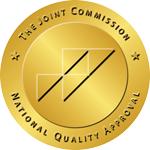The statistics surrounding opioid addiction in the U.S. are staggering. In 2017, increasing rates of addiction and overdose deaths over more than two decades – beginning in the early 1990s – triggered an unprecedented response from the highest levels of government. That year, the Department of Health and Human Services (HHS), under the direction of the White House – with input from medical experts across the nation – declared the opioid crisis a nationwide health emergency.
A plan to address the crisis accompanied the declaration. The five-point nationwide strategy defined the following priorities:
- Improve access to treatment, prevention, and recovery resources
- Increase availability of and access to drugs that reverse overdose
- Strengthen data reporting and collection processes
- Invest in research on addiction treatment and pain management
- Improve pain management practices
The statistics that led to this response were overwhelming and impossible to ignore. We’ll offer a quick look at the data from 2018, the year after the crisis declaration. These numbers show a small improvement over those from 2017:
- 47,600 opioid-related overdose deaths
- That’s 130 deaths a day – a 200% increase from 1999
- 32,656 people overdosed on synthetic opioids
- 15,349 people overdosed on heroin
- 2,000,000 people diagnosed with opioid use disorder (OUD)
- 10,300,000 people reported misusing prescription opioids
- 2,000,000 people reported misusing prescription opioids for the first time
- 808,000 people reported using heroin
- 81,000 people reported using heroin for the first time
The areas of improvement from 2017 included overall overdose deaths, which decreased by two percent, prescription opioid-related deaths, which decreased by 13.5 percent, heroin-related deaths, which decreased by four percent, and synthetic opioid-related deaths, which decreased by 10 percent.
The Impact of the Pandemic on Opioid Overdose
Those decreases were a good sign. In comparison to 1999, however, the numbers make it clear we’re still a nation in crisis – and the preliminary numbers on overdose deaths during the coronavirus pandemic show that during 2020 and 2021, the opioid crisis did not go away.
The most recent statistics indicate that while our attention was on the pandemic, it got worse:
- Opioid-related deaths rose sharply in March 2020, the month most shelter-in-place orders began
- These opioid-related death levels remained high through August 2020 – the worst months on record for opioid-related deaths
- In 2021, over 93,000 people died of opioid overdose, our highest year on record, 20,000 more than our previous highest year.
That’s why it’s important for us all to understand that evidence-based treatment for opioid abuse or opioid use disorder works and can save lives, help families, and improve our communities.
Before we discuss treatment for OUD – a.k.a. opioid addiction – we’ll address a couple of topics to ensure we’re on the same page.
What Exactly Are Opioids?
First, we’ll address the question of vocabulary: what’s the difference between an opiate and an opioid?
An opiate is a narcotic pain reliever derived from the opium poppy plant, whereas an opioid is a narcotic pain reliever created in a laboratory with a chemical structure almost identical to opiates. Opium is the best example of an opiate, while prescription medications like fentanyl or oxycontin are the best examples of opioids. For the purposes of this article – and for general use by the public and medical professionals alike – it’s one hundred percent acceptable to use the two terms interchangeably.
Here’s a list of the most commonly abused opioids:
- Heroin
- Oxycodone (Oxycontin, Percocet, Percodan, Endocet)
- Hydrocodone (Vicodin, Norco, Lortab, Lorcet)
- Fentanyl
- Meperidine (Demerol)
- Hydromorphone (Dilaudid)
- Codeine
- Morphine
- Methadone
Of these drugs, heroin and morphine are the two most associated with illicit street use, while medications containing oxycodone and hydrocodone are the two most associated with prescription misuse.
Fentanyl, a synthetic drug that’s 50-100 times more powerful than morphine, is the most dangerous of all the drugs on the list. All the drugs listed are dangerous and can lead to addiction and accidental overdose. However, due to its potency, Fentanyl is the most dangerous. Fentanyl is a legitimate narcotic pain reliever used in limited clinical applications, but over the past five years, illicit Fentanyl of unknown potency has become widely available on the black market. In addition, street dealers add Fentanyl to other illicit drugs such as heroin, cocaine, methamphetamine, and MDMA, which increase risk of overdose and death.
Why Are Opioids So Addictive?
Opiate pain medications are intended to treat moderate to severe pain. When prescribed and used as directed following surgery or a medical procedure, they support the healing process by helping patients manage their pain.
Unfortunately, taking opiates can lead to disordered use because of the effect they have on the human brain. When opioids enter the body, they cause – directly and indirectly – the brain to release a flood of chemicals that trigger feelings of pleasure, satisfaction, and euphoria. Collectively, these sensations are what’s known as feeling or being high.
The human body has its own set of opioids – called endogenous opioids – that relieve pain naturally, and trigger similar sensations. External opioids – called exogenous opioids – interact with the same molecules as endogenous opioids, but the analgesic and euphoric effects are dramatically more powerful and intense than those triggered by endogenous opioids.
Another fact about opioids contributes to the risk of addiction: tolerance. Tolerance means that to achieve the same effect, more of the drug is needed with each repeated use. Through a process of several steps, prolonged opiate use can develop into an opiate addiction:
- Tolerance: Larger doses of opiates are needed to create the same high.
- Physical dependence: The body enters withdrawal in the absence of opiates.
- Psychological dependence: Intense cravings for opiates drive repeated use, even when the user knows repeated use is unhealthy and dangerous.
Once physical and psychological dependence develop, a host of behaviors that cause physical, social, and emotional damage to the user manifest. Collectively, these behaviors are called opioid addiction or opioid use disorder (OUD).
Signs and Symptoms of Opioid Use Disorder (OUD)
While someone with OUD can experience harsh physical side effects, changes in behavior are often the more obvious signs of OUD. A severe OUD has negative consequences in almost every area of life: financial, professional, interpersonal, and legal – to name a few. That’s why it’s important to understand the primary symptoms, and how they may appear.
The behavioral symptoms of OUD vary from person to person. Here are some of the common behavioral signs to look out for:
- Inability to stop using opioids
- Isolating or withdrawing from family and friends
- Impaired work or school performance
- Inability to fulfill family obligations
- Stopping participation in/withdrawing from favorite activities
- Borrowing or stealing money
- Unexplained financial problems
- Ignoring or avoiding loved ones
- Drastic changes in behavior
- Lying about money
- Lying about drug use
- Faking pain-related injuries or hurting oneself to get a new prescription
The physical symptoms of OUD also vary from person to person, but there are common signs to look out for:
- Drowsiness
- Cravings
- Weight loss
- Changes in sleep patterns
- Changes in appearance: reduced care for personal hygiene
- Repeated flu-like symptoms
- Decreased libido
Like the behavioral and physical symptoms of OUD, the psychological symptoms can vary from person to person. Here’s what to look out for:
- Increased irritability
- Decreased cognitive function
- Defensiveness – especially around topics of addiction
- Increased symptoms of preexisting emotional disorders, such as depression, anxiety, or bipolar disorder
In isolation or when occurring occasionally, the signs and symptoms above may be related to any number of things other than OUD. Stress, anxiety, and challenging life circumstances can cause behavioral, physical, and psychological changes in anyone, independent of the presence of drug addiction. When these signs and symptoms persist over time or appear in clusters, they may indicate the presence of opioid addiction.
Signs and Symptoms of Opioid Withdrawal
Opioid withdrawal refers to the set of psychological, physical, and emotional responses that occur when someone addicted to opioids stops taking the drug. Withdrawal symptoms typically appear within 24 hours from the last dose. They’re divided into two categories: early and late.
Early symptoms of opioid withdrawal include, but are not limited to:
- Agitation/irritability
- Low energy
- Mood changes
- Anxiety
- Muscle aches
- Insomnia
- Runny nose
- Chills
- Profuse sweating
- Uncontrollable yawning
Late symptoms of opioid withdrawal include, but are not limited to:
- Stomach cramps
- Diarrhea
- Goosebumps
- Dilated pupils
- Increased heart rate
- Changes in blood pressure
Typically, the symptoms of opiate withdrawal – which can begin within 24 hours from stopping opiate use – are uncomfortable but not necessarily life-threatening, except in cases of extremely long-term use or in the presence of underlying health conditions. Additionally, if opioid use is combined with the use of other drugs, the chances for serious adverse complications during withdrawal increase dramatically. That’s why it’s vital that an individual be closely monitored by a physician during withdrawal.
Physical withdrawal symptoms can last anywhere from a week to a month. The psychological and emotional symptoms – low energy, insomnia, and anxiety – can last for several months, depending on the duration and level of use. Long-term users may experience post-acute withdrawal symptoms (PAWS). These symptoms occur because the brain takes time to achieve homeostasis – or equilibrium – in the absence of opioids. During this time, severe mood swings are common, and the various physical symptoms of withdrawal may come and go rapidly. Generally, post-acute withdrawal periods last only a few days but long-term opiate addicts report experiencing symptoms for up to two years after cessation of use.
After supervised withdrawal, it’s important to seek professional treatment for opioid use disorder. Professional treatment and support are vital to long-term abstinence and sobriety.
Evidence-Based Treatment for Opioid Addiction
The most effective treatment for opioid use disorder (OUD) follows an integrated treatment model. Integrated treatment is holistic, meaning it addresses the entire person, including all the biological, psychological, and social aspects of their life. If a co-occurring mental, behavioral, or mood disorder is present, then it’s essential to treat that disorder as well. An integrated treatment plan must be tailor-made and customized to the needs of each individual.
Evidence-based treatment plans for OUD include, but are not limited to:
- Individual counseling
- Cognitive behavioral therapy
- Motivational Interviewing
- Dialectical behavioral therapy
- Group Counseling
- Family Counseling
- Medication (if needed)
- Methadone, Suboxone, buprenorphine
- Community/peer support
- 12 Step groups such as Narcotics Anonymous (NA)
- Lifestyle Modifications
- Mindfulness
- Experiential activities
- Exercise
- Expressive therapies (art, music, journaling)
- Relapse Prevention
- Aftercare plans
- Ongoing community support
When seeking treatment for OUD, find a treatment program that includes all the elements above. Each piece is important, and each contributes to long-term, sustained sobriety. The most highly regarded treatment programs, whether they’re residential, partial hospitalization, intensive outpatient, or outpatient, include the elements above, in varying degrees. Although the fundamental elements of effective treatment programs are universal, each treatment program or center has a unique identity and specific approach to treatment.
The best way to find an appropriate match is to gather all the information available on a given treatment program or detox center, then call or visit to get a feel for the clinical staff, support staff, and general atmosphere. Committing to treatment is a life-changing decision, and receiving the highest quality professional support in an environment that synchronizes with the specific needs of the person in treatment increases their chances of achieving sustained, lifelong sobriety.


